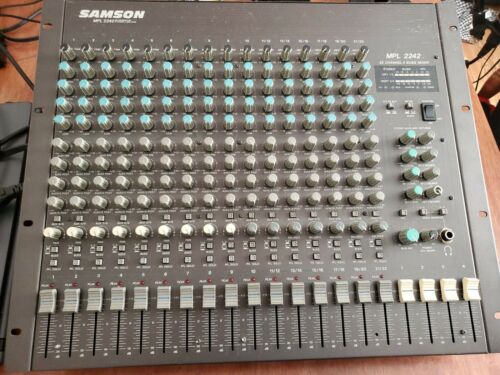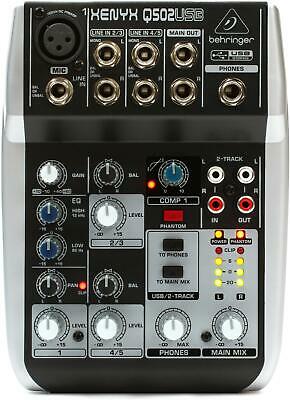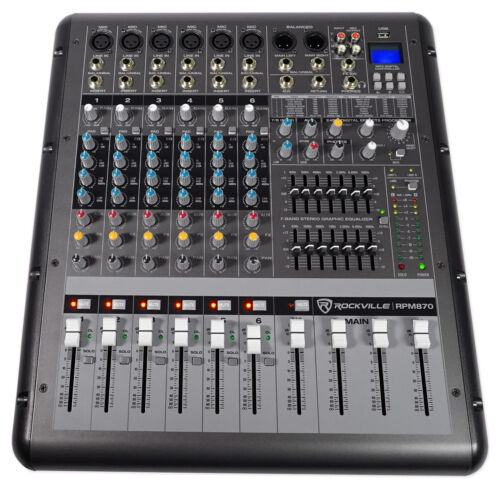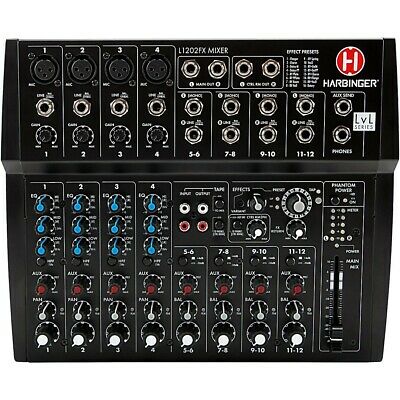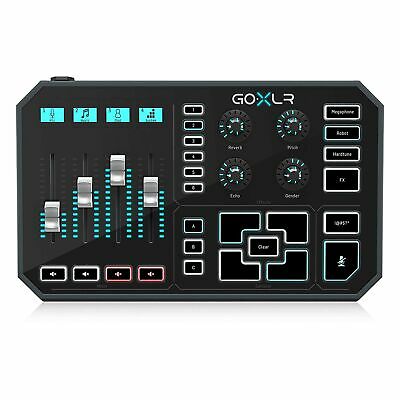-40%
Samson MPL2242 22 CHANNEL MIXER
$ 22.17
- Description
- Size Guide
Description
Samson MPL2242 22 CHANNEL MIXER.SAMSON MPL2224 MIXER MANUAL
Documents
Samson MPL2224 Mixer Manual
2/37
Produced by n The Right Wavelength fo r Samson T echnologies Corp.
Written by How ard MasseyLayout and graphic design by Linda E. Law
Copyright 1993 Samson Technologies Corp.
Printed January 1993
Samson Technologies Corp.262 Duffy AvenueHicksville NY11801Phone:516-932-1062Fax:516-932-3815
8/12/2019 Samson MPL2224 Mixer Manual
3/37
Table of Contents
Introduction MPL 2242 Features 1
Guided Tour 3Overview 3Mono and stereo channels 4Main section 6Jackfield 8
Connecting the MPL 2242 10 Balanced co nnectors 10
' .Unbalanced connectors 10Mic connectors 10Insert, connectors 12Using a patch bfiy 12
Grounding Techniques 16
MPL 2242 Signal Flow 17
Setting the Correct Gain Structure 18
Bussing Submixing and Channel Muting 20
Pan/Balance 21
Equalization 23
uxiliary Sends and Returns 24
Channel Inserts 25
PFLandlPS 26*vChanging the MPL 2242 from Rack-Mount toTableTop 27
Applications 28Using the MPL 2242 as a main live mixer 28Using the MPL 2242 as an onstage monitor mixer 29Using the MPL 2242 as a keyboard submixer 30Using the MPL 2242 as a recording mixer 31
Specifications 33
Samson MPL2224 Mixer Manual
4/37
Introduction
Congratulations on purchasing the Samson MPL 2242 mixer In this manual,we'll take you on a guided tour through a ll the features of this powe rful and flexi-ble device, and we'll tell you how to get the m ost out of the MPL 2242 in yourparticular env ironment. If this is your first m ixer, we 're confident that you'll findthe inform ation in these pages v aluable read them carefully before proceedingfurther. If, on the other hand, you've had some previous experience with mixersand dislike reading m anuals well, w e have to admit that the 2242 w asdesigned so you folks can start using it right awaybut w e still suggest you takesome time out first to go throug h these pages so you can fully understand howwe've implemented a number of unique features.
We'll start with system fea tures and an overview of the MPL 2 242, followed by aguided tour of its front an d rear panels. Then we 'll describe how the MPL 2242should be connected to your ex isting equipment (including wiring diagrams) andtalk about the im portant topics of signal flow, gain structure, and grounding tech-niques. Next, we'll cover a number of specific MP L 2242 features (such asbussing, panning, equalization, auxiliary sends and returns, using channel
inserts, soloing, and co nverting from rackm ount to tabletop use n detail.Finally, we'll wrap things up w ith a series of applications notes describing howyou can use the M PL 2242 for both live performa nce and recording.
Oh, and one last thing don't forget to fill out and mail in the enclosed warranteecard This will enable you to receive online technical support and will allow us tosend you updated information about other Samson products in the future.
P 4 Features
"MPL" stands for "Microphone/Program/Line" and the name describes the broad
range of signals which can be handled by this powe rful console. In fact, th ecompact design of the MP L 2242 belies an extraordinary versatility. Add excel-lent soun d quality to the eq uation, and yo u've got a product w hich is equallyuseful as a live performance mixer, a keyboard s ubm ixer, or even a mainrecording mixer (you'll find descriptions o f each of these applications at the con-clusion of this manual). Here are som e of the MPL 2242's m ain features:
22 input channels, including 6 stereo channels. The 10 monophonic chan-nels provide balanced inputs that can be used for microphone or line-levelinput, and the 6 stereo channe ls are ideal for line-level sources such as out-board signal proce ssors; CD players; tape or cassette recorders; stereodrum m achines; keyboards; and MIDI tone modules.
4 uss outputs and a balanced m ain stereo mix output (a "buss" is simply apathway through w hich a signal can be routed). Busses 1 and 3 are nor-malled to the left m ix output and busses 2 and 4 are norma lled to the rightmix output. This flexible design allows you to easily mute selected channelsand/or to create sub mixes w ithin your main mix.
6 au xiliary sends an d 4 stereo auxiliary returns (which can be used as 8monophonic returns). Aux 1 is pre-fader and pre-equalizer, making it idealfor use as a headphone or monitor cue mix; all other auxiliary sends arepost-fader and post-equalizer. Each channel can route signal to up to fourauxiliary sends simultaneously.
Samson MPL2224 Mixer Manual
5/37
ntrodu tion
Independent 4-band equalization for each channel, with 15 db of cut or boostfor low (80 Hz) and high (12 kHz) frequencies, and 12 db of cut or boost forlow mid (800 Hz) and high mid (2.5 kHz) frequencies.
Constant level pan controls for placing each monophonic channel in the left-right stereo spectrum as well as balance controls for each stereo channeland aux return that allow you to blend the relative levels of stereo inputs.
As an alternative to standard Pre Fade Listen PFL) soloing for each chan-nel, the M PL 2242 also provides true In Place Soloing IPS). The IPS fea-ture allows you to isolate a single channel, post-fader a nd post-EQ, in itsproper stereo position and with all effects in place. PFL allows headphonemonitoring of individual channels, pre-fader (but still post-E Q).
Channel inserts are provided for each of the 10 monophonic input channels,enabling you to use outboard signal pro cess ors such as outboardequalizers, compressor/limiters, or noise gates in a standard "effect loop.
The MPL 2242 can be mounted in any standard 19" rack (taking nine rackspaces) or effortlessly converted for tabletop use. When rack-mounted, itsconnector panel rotates to the rear for easy accessibility.
The provision of 48v phantom power makes it possible to plug high-qualitycondenser microphones directly into the MPL 2242 , without the need forexpensive and cumbersome external power supplies.
A flexible metering system allows you to view a t a glance the levels of eitherof the two buss pairs, as well as phantom pow er and IPS or PFL status andlevel.
An independent front-pane l headphone output with dedicated volume controland the ability to monitor either or both of the two buss pairs. Channels thatare soloed in IPS or PFL mode are also routed directly to the headphoneoutput.
Input trims for each mono channel are continuously adjustable from +4 to-50 db (+4 to -30 db for stereo channels), making it possible to use theMP L 2242 with a wide variety of signal sources and outboard equipment.
Center detents for all pan, balance, and EQ controls as well as detented0 db fade r points, making it easy to use the M PL 2242 even in low-lightsituations su ch as live performance.
Peak input LEDs for each channel, showing you when an input signal isoverloading or near overloading (these illuminate -5 db prior to distortion).
Custom hybrid circuitry that places each ch annel's mic preamp and four-band equalizer on the same circuit board. This low capacitance" designresults in less noise, reduced cross talk, and extended freque ncy responsein other words, the MPL 224 2's sound stacks up to that of some of the bestmixers around
Last but certainly no t least, an affordable price. The MPL 2242 has beendesigned from the ground up to provide versatility a nd excellent sound
quality without breaking the bank.
8/12/2019 Samson MPL2224 Mixer Manual
6/37
uided Tour Overview
The following illustration shows an overview of the front panel of the M PL 2242:
i- 10 11/12 13/14 15/16 17/18 19/20 21/22INPUT TRIM INPUT TRIM INPUT TRIM INPUT TRIM INPUT TRIM INPUT TRIM INPUT TRIM INPUT TRIM INPUT TRIM INPUT TRIM INPUT TRIM INPUT TRIM INPUT TRIM INPUT TRIM INPUT TRIM INPUT TRIM
+4 -50 +4 -50 +4 -50 +4 -50 +4 -50 +4 -50 +4 -50 +4 -50 +4 -50 +4 -50 +4 -30 +4 -30 +4 -30 +4 -30 +4 -30 +4 -30
.0. .0. .0. .0. .0. .0. .0. .0. .0. .0. .0. .0. .0. .0. .0. .0.
M PL 4CHANNEL 4 BUSS MIXER
- 1 5 + 1 5HIGH. 0
-15 +15 -15 +15HIGH HIGH.0. .0.
-15 +15HIGH
. 0
- 1 5 1 5 - 1 5 + 1 5HIGH
- 1 5 + 1 5HIGH
. 0
- 1 5 + 1 5HIGH
.15+15HIGH
. 0.
-15 +15HIGH
- 1 5 + 1 5HIGH
-15 +15HIGH
. 0.
-15 +15HIGH
- 1 5 + 1 5HIGH
. 0
-12+122.5KHz
. 0
- 1 2 + 1 22.5KHz
. 0.
-1-2+122.5KHz
-12 +122.5KHz. 0
-12+122.5KHz
. 0.
-12+122.5KHz. 0.
-12+122.5KHz. 0
- 1 2 + 1 22.5KHz. 0
- 1 2 1 22 . 5 K H z
. 0
-12+122.5KHz. 0.
-12+122.5KHz
. 0
- 1 2 1 22 . 5 K H z
. 0
-1*2+12SOOHz
12 12
S O O H z-1-2+12
SOOHz
- 1 5 + 1 5LOW
- 1 5 + 1 5LOW
- 1 5 + 1 5LOW
- 1 5 + 1 5LOW
. 15+15LOW
- 1 2 + 1 2SOOHz
-S-
-12+12SOOHz
- 1 5 1 5LO W
15+15LOW
- 1 5 + 1 5LOW
. 15+15LOW
- 1 5 + 1 5LOW
-15 15
- 1 2 1 2S O O H z
. 0.
-12 +12 -12 SOOHz SOOHz
.0. . 0.
15+15LOW
-15 +15LOW
. 1 5 + 1 5LOW
- 1 5 + 1 5LOW
- 1 5 + 1 5LOW
